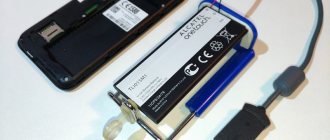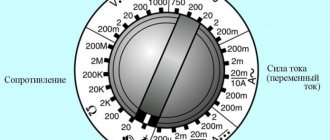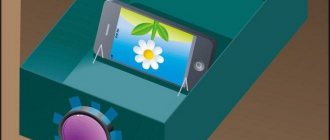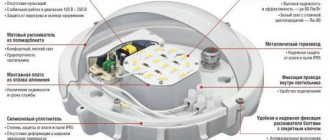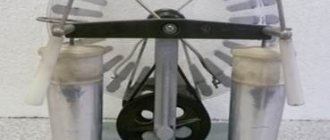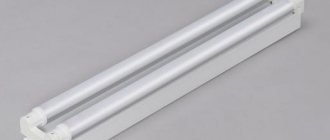Sections of the article:
How to charge a battery at home?
The most unexpected situations often happen when the keyboard or, for example, the camera stops working. And the reason for this is not a breakdown at all, but simply a dead battery. It is not always possible to have a new battery at hand to replace the old one. But this is not a death sentence, and this problem is completely solvable. In addition, it is possible to recharge the batteries at home.
If you need to charge alkaline batteries, you can do this using a special charger, which will quickly bring them back to normal. In this case, the service life of the battery decreases by 1/3 percent each time. In addition, the battery may leak.
It is worth noting that alkaline batteries can be charged. You should not do the same with salt batteries. They may leak or even explode.
You can charge batteries at home using various methods.
How to charge AA batteries with a power supply
You can charge AA batteries using the power supply. To do this, you need to connect it to the network and connect it to the battery using wires. In this case, the plus must be connected to the plus, and the minus to the minus. Minus and plus are always marked on batteries.
After connecting, the battery should heat up to 50 degrees and then you will need to disconnect it. Then you will need to cool the battery. When it becomes warm it can be used.
AA batteries are charged in a different way. The power supply is plugged in and turned off. Such actions are carried out for about 2 minutes. Next, the battery is placed in the freezer for 10 minutes, taken out and waited a few minutes before it is heated. That's all, the battery is charged again, it can be used for its intended purpose.
Recharging at home
The question arises: is it possible to charge alkaline batteries in a charger? There is a relatively safe way to charge an alkaline battery, but its effectiveness is questionable. For this emergency measure you will need a 4 battery charger. In the first three compartments from left to right we insert discharged alkaline cells that will be charged. And in the fourth (the one on the right) there is a battery. The duration of the “treatment” is from 5 to 10 minutes. After this, alkaline elements can be used again, but not for long.
Read also: Taper sign on the drawing
Enthusiasts have come up with numerous ways to charge a AA battery at home. Of course, this is not a full recharge. After all, the chemical reactions themselves inside such a power source are irreversible. For example, if you gently crush the battery with pliers or tap it on any hard surface, this will slightly reanimate the electrolyte and extract a few extra percent of power. Just be careful not to damage the housing, otherwise the electrolyte will leak out and the power source will not work.
It is impossible to heat discharged galvanic cells - there is a high risk of explosion.
If you want galvanic cells to last longer, do not use them in the cold: they quickly lose their charge. Pay attention to the release date: batteries tend to self-discharge. You should not use different types of batteries at the same time, or use old ones with newer ones. This also reduces their service life.
We often miss good shots in the forest or at sea, we may be late or stumble in the dark because a simple battery from a camera, watch or flashlight suddenly runs out. It's hard to say exactly when the charge will be used up, unless this is a Duracell model with an indicator. But don't despair! Thanks to a few tips, you can avoid unpredictable situations and take the intended photographs from a digital camera, find out the exact time, illuminate the road, etc. In this article, we will tell you how to charge batteries at home without a charger, which will make life much easier in unpredictable situations.
Know that to charge alkaline batteries you can use a special charger that can relatively quickly restore a discharged item. But each charging session will reduce its operating life by approximately 1/3. In addition, leakage is possible.
Note! At home you can charge: alkaline (alkaline) AA batteries. Don't: salt. The possibility of leakage or even explosion cannot be ruled out!
Charging can be done using various methods. Therefore, you should not throw away an element as soon as it stops serving. A few recommendations - and he is back in action. The first method, using which you can charge AA batteries yourself without a charger. We connect the power supply to the network. Next, using the connection wires, we connect the used battery to the unit. Don't forget about polarity: plus is connected to plus, and minus is connected to minus. It’s quite easy to find where the “-+” is on a discharged object: they are marked on the body.
Having connected the battery to the power source, wait until it warms up to fifty degrees and turn off the power. Next, wait a few minutes for the heated object to cool down. Otherwise, it may explode. Then, while the AA is still warm, it needs to be charged in a different way. It consists of the following: connect the power supply to electricity and disconnect it. This should take about 120 seconds. Next, we place the object to be charged in the “freezer” for 10 minutes, then take it out and wait 2-3 minutes for it to warm up. That's it, the charge is restored right at home without a charger! You can safely use it for the same computer mouse.
Main rules:
- The charge is not feasible if you arrange the + and - in a different way. On the contrary, the battery will drain even faster.
- It is permissible to charge the object at home 1-2 times.
- Using the method described above, you can only charge simple AA alkaline batteries.
- The charge can be carried out in any ambient temperature conditions.
Another charging method is the conventional heating method.
But it is fraught with consequences (explosion). In this way, you can restore, again, small alkaline batteries at home. You can also charge them in a simpler way - place discharged objects in hot water, but for no more than 20 seconds, otherwise sad results are possible. Another simple way is to flatten or reduce the volume of the element with your own hands. This way you can charge various AA batteries. There is an example when a person, after the charge of a cast-ion battery had expired, simply took it out and stomped on it, after which the charge indicator showed one hundred percent. Read also: Battery with reverse polarity differences
You can also restore the charge without a charger this way: we make 2 holes with an awl near each carbon rod with a depth of three-quarters of the height of the element itself. We pour liquid into them and seal them, covering them with resin or plasticine. You can pour not just liquid, but an eight to ten percent solution of hydrochloric acid or double vinegar. Pour the solution several times to ensure sufficient saturation. This method allows you to charge up to seventy to eighty percent of the initial capacity.
Another way to charge the product: open the cell cover with a knife. If the zinc cylinder, the object's rod and the carbon powder are intact, then immerse the object in the salt solution. Its ratio is as follows: 2 tablespoons of table salt per several glasses of liquid. Next, boil the solution together with the element for about ten to fifteen minutes. Then we return the gaskets responsible for sealing to their place and cover them with wax or plasticine.
In this article, we told you how to charge batteries at home without a charger. The proposed tips apply only to finger batteries, since they, unlike little finger batteries, flat batteries (tablets) used for lasers, are most often used in everyday life. Now you can properly charge the necessary elements even if there is no electricity!
Also read:
Did the battery from your camera, flashlight, children's toy or other necessary device suddenly run out? Such an eventuality cannot be foreseen. Unless you use special batteries with indicators. Or be careful not to carry a replacement with you. How to charge batteries at home? We will share with you useful instructions and recommendations.
How to charge batteries in hot water
Using this method, it is possible to charge AA alkaline batteries. But when using it, you need to be extremely careful so that the battery does not explode when heated.
It is possible to recharge the battery in another way. You just need to place it in hot water for 20 seconds. But in no case longer.
Charging methods
Before charging a AA battery at home, it is advisable to know what type of charger control you will need to use. Two charge control methods are used:
The first method is used for NiCd and NiMh batteries, and the second for lead-acid, LiIon and LiPol batteries. Automatic battery chargers using specialized microcontrollers allow you to properly recharge any type of energy cell and control the stages of energy recovery.
Charger with current control
Such devices are called galvanostatic. The main parameter of the memory is the battery current value. Correctly recharging the battery and not deteriorating its characteristics can be achieved by selecting the current value and charging speed. In order to determine the current values, the equality I = 0.1C is used, where C is the battery capacity. It is not difficult to understand why it is not recommended to use a larger value by imagining the chemical processes taking place in galvanic devices. In addition, firstly, there is increased heating, and secondly, there is a memory effect.
To avoid self-discharge, chargers usually switch to low-current charging mode at the end of the charge.
But this method is unacceptable for alkaline batteries, so they cannot be recharged in this mode. For these types, a charging termination method is used when the current does not change for several hours.
Voltage control method
The type of operation is based on a potentiostatic mode that turns off the charging process when a certain voltage is reached. For this type of charger, different charging rates are used. For nickel-cadmium and nickel-metal hydride, three charge rates are used: long (0.1C), fast (0.3C) and ultra-fast (1C). During the charging process, the current decreases, and the voltage at the battery terminals approaches the charger voltage. It is believed that this method cannot fully charge the battery.
Reducing battery capacity
This method involves reducing the volume of the power source. In this way, discharged batteries are often reanimated. To do this, you just need to remove the AA battery from the equipment and try to flatten its body with pliers.
As a result, it will decrease and will work for some time.
Differences between salt batteries and alkaline batteries
Both salt and alkaline batteries have not lost popularity among consumers for many years. However, there are a number of differences between these types of batteries.
Saline:
- If they are not used within two to three years from the date of release, then there is a high probability that they will be completely discharged.
- Susceptible to temperature changes, which significantly affects shelf life.
- Internal chemical processes occurring near the end of its service life often cause the contents of the battery to leak.
- They do not have high capacity.
- They have a short operating time.
- They are not able to withstand high loads, therefore they are suitable only for devices with low energy consumption: watches, kitchen scales, remote controls.
Alkaline:
- Performance continues even five years after purchase.
- Virtually immune to temperature fluctuations.
- They don't leak.
- They have a specific capacity that exceeds that of salt cells, at least 2 times at a low-current load and 5–10 times at a high-precision load.
- Suitable for devices with any level of energy consumption, but perform best under constant load conditions.
Restoring a battery in saline solution
And finally, the last way to charge a AA battery. The element cover is opened using a knife. If the cylinder, carbon powder and rod are intact, the battery is immersed in a saline solution.
To prepare the solution, you will need to mix 2 tablespoons of salt in several glasses of water. After which the battery is boiled in this liquid for 15 minutes. In the end, all that remains is to return the sealing gaskets and cover everything with plasticine.
Using these methods, you can find a solution to an awkward situation and extend the life of your AA battery for some time.
Share article on social networks
History of chargers
The discovery of galvanic electricity led to the creation of the first prototype of rechargeable batteries. In 1798, Italian physicist Alessandro Volta conducted an experiment involving placing copper and zinc plates connected in series in an acid solution. He discovered that when current was passed through the plates after it was interrupted, a residual charge remained on them. Subsequently, Gotero, Marianini, and Becquerel became interested in these experiments. But it was not until 1859 that Plante created the truly first battery .
His experiment was based on strips of lead with a piece of cloth sandwiched between them. He then rolled the strips and immersed them in acidified water. By applying and removing current, he received a potential difference across them, that is, the accumulation of capacitance by the element. Further development led to the fact that when the plates were coated with lead oxides, the formation of the active layer improved.
In 1896, the American company National Carbon Company (NCC) was the first in the world to begin producing batteries. Today it is known as Energizer. Early in 1901, scientist Thomas Edison patented a nickel-cadmium type of battery. At the same time, Waldmar Jungner was developing a nickel-iron type called an alkaline battery. Alkaline batteries are used in transport and power plants. In parallel with the development of batteries, charge recovery technologies are also developing.
Battery Chargers
The main purpose of the charger is to charge the battery. There are many chargers on the car market; you need to choose the most suitable one in terms of functions and cost.
By design, chargers are divided into groups:
- starting chargers that will help you instantly start the car when there is no time to charge the battery. They give off a short-term impulse of high power, which helps crank the engine.
- Transformer models are outdated models, not currently produced, but stable and durable.
- Pulse - current is supplied to them as they charge; they are designed to gradually charge the battery.
Battery chargers are:
- automatic. Automatic chargers cannot charge severely damaged batteries because they do not perceive the load on their terminals and do not begin to charge them. They are good for a full charging cycle because they automatically regulate the current supply and smoothly reduce the charging current as the battery gains charge and turn off themselves when fully charged. Such chargers can be left to work all night unattended.
- Chargers with manual current adjustment. There are many inexpensive models of chargers with manual adjustment on sale that can charge even heavily and long-discharged batteries by initially supplying an extremely weak current. It supplies a constant current, and such a charger must be constantly monitored, since an explosion is possible due to a sudden “boiling” of the electrolyte.
According to the output voltage there are:
- 6 V - usually used for charging batteries of scooters and motorcycles;
- 12 V - used for charging car batteries;
- 24 V - charges the battery of agricultural machinery.
Chargers also differ in:
- power , it must be greater than the battery capacity;
- charging current . Another parameter that must be monitored and regulated by the charger. For charging, the current should not exceed 10% of the battery capacity. For a battery with a capacity of 55 Ah, its value should be 5.5 A. The maximum current that the charger can produce should be 2-3 times higher than the nominal current required for charging.
To charge gel batteries, the charger requires a special mode. In addition to these parameters, chargers are equipped with protection circuits against overheating, incorrect connection of terminals to terminals, and intelligent charging control systems.
How to charge maintenance-free batteries
Most modern batteries are maintenance-free. There are no plugs for adding electrolyte; the lid is tightly fixed. There is a charge indicator on the top or side, from which you can find out about the condition of the battery. To charge maintenance-free batteries, it is recommended to use automatic chargers that cope with this task better than others.
By selecting the desired mode and charging the battery, you don’t have to worry about the need to monitor and adjust the modes. The device will do everything itself. If your charger does not have such modes, then you should charge it in a gentle mode at a charging current of 3-5 A. It will take longer to charge, but the battery life will also increase.
How to charge with DC current
For DC charging, chargers with the ability to constantly support the charging current are used. Two charging stages are used.
The first stage - the charging current is equal to 10% of the battery capacity (if the capacity is 60 Ah - the charging current is 6A). The second stage is a charging current of 5% of the battery capacity. It is used to eliminate negative factors that arise when charging close to 100%.
Charging time is 10 – 12 hours. If it is possible to use a hydrometer to control density, then by measuring the density, you can determine the degree of charge based on the density of the electrolyte.
How to charge the battery during rare trips
If you drive your car quite rarely and the trips are short, then the battery does not have time to recharge from the generator during the trip. In such cases, the battery quickly discharges because it is stressed when you start the car and is not recharged while driving, which is especially noticeable in winter.
In this case, car owners connect chargers and recharge the battery constantly. This mode is not correct and will shorten the battery life. It is better to charge the car in the usual way - from the generator after starting the engine or from the charger.
If you do not drive your car at all in winter, then before storing the car, you should fully charge the battery and do not connect the negative terminal.
Which batteries to choose?
Which batteries should you prefer - salt, alkaline or lithium? It would seem that the answer is obvious - alkaline, since salt ones have low capacity, and lithium ones are too expensive. But it's not that simple. The choice will depend on what we are going to feed them.
Salt
Why, for example, buy high-capacity alkaline elements for a remote control if it has minimal energy consumption? Such batteries will “die” of old age faster than they run out. But the salt ones will be just right - cheap and cheerful. They used to leak, but now there is no such problem, so we feel free to buy and use them. The same can be said about other electronics that consume low current. Electronic and electromechanical watches, children's buzzers, doorbells and other small things that you can't do without.
Alkaline
But “more voracious” devices need alkaline elements, since salt ones will quickly run out, and if the current consumption of the device is high, then they will not draw it at all. If, for example, you equip a film camera with salt elements, then they will not even have the strength to advance the film. A children's electric car powered by salt batteries will most likely move, but will stop at the first pole. Digital photo and video cameras, a flashlight, an active speaker, a decent-quality radio - all this requires high-quality power, so we buy alkaline batteries for them.
Lithium
Where will lithium voltaic cells go? Their capacity is not much larger than that of alkaline ones, but the price... They, of course, can be used instead of alkaline ones, but this is not their main purpose. Let us remember their main advantage - a very long service life.
Let's put such a battery in a remote control or a flashlight, which we use in emergencies - start a diesel engine when the lights are turned off or shine it under the sofa when a cufflink rolls there. Let’s set it up and forget about it for ten years. It is also suitable for powering all kinds of wireless sensors, autonomous weather stations, electronic thermometers, tonometers, timers, scales, watches and other similar electronics that we use occasionally or that consume little.
Do you have a digital camera that we use on special occasions: for birthdays and when documents need to be “scanned”? We also install a lithium battery. In general, lithium is useful where alkaline and salt batteries will age faster than they will run out.
Devices are distinguished by their shape and the chemical reaction that produces an electric current.
Classification by shape:
- Finger ones with the letter AA and little finger ones with the AAA marking . They are cylindrical devices, suitable for use in almost all types of equipment.
- Markings C, D are “barrel” batteries. The cylinders in this case are large, the power reserve is increased. They are used in mechanisms where it is necessary to maintain operation for a long time, for example, in record players.
- Rectangular devices.
- Disc galvanic cells marked CD . These are flat, round “tablets”. Used in kitchen scales, wristwatches, etc.
The operating voltage indicator in cylindrical devices is 1.6 Volts, in rectangular ones up to 9 Volts.
The parts are distinguished by chemical reaction:
- Lithium . Tolerates high loads, shelf life is 5-7 years.
- Alkaline . They are also called alkaline. Can handle medium to heavy loads. Can be stored for up to 5 years.
- Saline . Low-power batteries with a short shelf life of up to 3 years.
There are several ways to replenish your energy charge; let’s look at the most popular ones.

